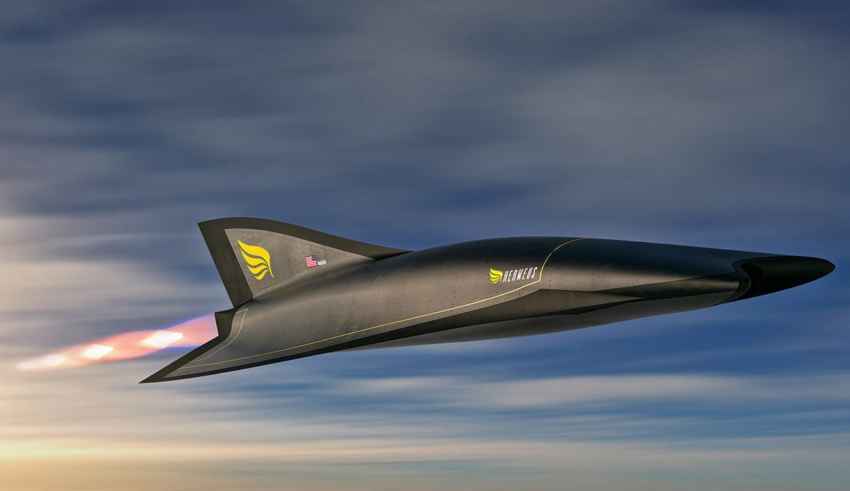
The evolution of missiles during the decades led to the accomplishment of the hypersonic ones, which are capable of travelling with speed exceeding 5.000 kilometres per hour. The speed that manages to reach a hypersonic missile is at least five times the speed of sound, known as March 5. As a result, this type of technology accounts for a revolutionary procedure in which the longer-range military operations can be successfully achieved sooner and with much more efficiency.
There are two types of hypersonic missiles accounting for the alternatives of the existing ballistic and cruise missiles, which are hypersonic glide vehicles (HGVs) and hypersonic cruise missiles (HCMs). HGVs compared to ballistic missiles provide a more unpredictable route, staying undetectable from the opponent’s radars, because they travel at a lower altitude, and their maneuverability is superior. Carrying unconventional characteristics, both HGVs and HCMs can be challenging for the existing air and missile defenses and thus may be more efficient. General Mark Milley mentioned: “There is no defense against hypersonic…you are not going to defend against it…Those things are going so fast, you are not going to get it.”. Despite their nihilistic approach, the U.S. is the only country right now trying to develop defense systems against HGVs.
The countries that are really interested in hypersonic weapons currently are the United States, Russia and China. The research regarding hypersonic technology was well-funded during Trump’s administration and goes on until today, as part of enhanced conventional deterrence against China and Russia. The overall approach of the U.S. is that hypersonic weapons are not to replace the existing missiles, but to facilitate their success.
Russia states that hypersonic weapons are a way of confrontation against the U.S. motives. Putin himself underlined the necessity of this system, due to the fact that the United States withdrew from the Anti-Ballistic Missile Treaty in 2002. Unlike the U.S., which operates with hypersonic conventional missiles, Russia has introduced dual-capable missiles, for nuclear and conventional use. Project 4202, known as Avangard is Russia’s latest hypersonic nuclear program with a boost-glide vehicle able to reach more than March 20 speed, and an estimated range of 6.000 kilometers. This project has already deployed since 2019 and it is perfect for long-range operations.
Last but not least, China has not provided much information regarding its hypersonic weapons. It is obvious that China has a motive to develop such weapons, in order to be able to deal with the U.S. in the event of a major conflict in Asia. Currently, the country tests a HGV for intercontinental range similar to the Russian Avangard. China’s intentions related to the capability of its DF-17 are not clear, and thus many believe that the missile will be dual-used.
Evidently, speed is one of the most significant factors regarding warfare operations, providing the factor of surprise as a vital advantage of the attacker. Blitzkrieg was an effective strategy during World War II, as it was the “shock and awe” campaign in Iraq. Nevertheless, in a stable nuclear relation among nations-states, the factor of speed can easily destabilise and escalate the tensions, as the invariant of the second-strike retaliation tends to be eliminated. This means that the nuclear states will seek to establish early warning and command and control (C2) systems, in order to be able to respond to a strike before the destruction of their own nuclear arsenal. Hence, the possibility of a nuclear attack is on the table, as deterrence becomes obsolete and states choose to resort to pre-emption.
Hypersonic weapons are quite challenging for the nuclear deterrence, as they change dramatically a very crucial and decisive factor of warfare, which is the speed. When speed along with agility of missiles increase, the response time of the adversary decreases significantly and thus arises a security dilemma, favoring the pre-emptive use of force. Hence, on the one hand the nuclear stability is in danger, on the other hand hypersonic weapons themselves can result in a nuclear escalation. Another issue related to speed is the pressure of time in the decision making process, which can also lead to nuclear escalation, due to the fact that decision makers do not have the adequate time to assess all the required factors, and inevitably end up with hasty decisions.
Conclusion
The potential risk to stability due to hypersonic weapons could be mitigated by the arms control processes, where there are mutual agreements and commitments among the concerned countries. Arms control can stabilize arms race procedures and therefore reduce preemptive strikes.
Such arms control efforts could be bilateral and/or unilateral confidence-building measures through banning or limiting certain types of hypersonic missiles. For instance, a productive confidence-building measure could be information sharing and demonstration of the systems. Not only data exchange, but exchange of observers at military exercises would be actions that increase transparency among countries and facilitate arms control in general. The United States and Russia have already expressed their interest in discussing hypersonic weapons as a topic on the strategic stability agenda. Furthermore, in July 2021 the two countries demonstrated their intentions to proceed in future arms control arrangements. Although there are no tested solutions for mitigating the instabilities of hypersonic weapons, there are promising solutions in arms control procedures.
References
- Blinken, A. (2021, February 03). On the Extension of the New START Treaty with the Russian Federation. U.S. State Department. https://www.state.gov/on-the-extension-of-the-new-starttreaty-with-the-russian-federation/.
- Bugos, S., & Reif, K. (2021, September). Understanding Hypersonic Weapons: Managing the Allure and the Risks. An Arms Control Association Report. https://www.armscontrol.org/sites/default/files/files/Reports/ACA_Report_HypersonicWeapons_2021.pdf
- Coetzee, E. (2021, May 21). Hypersonic weapons and the future of nuclear deterrence. Scientia Militaria: South African Journal of Military Studies, Vol.49(No.1), pp. 35-56. DOI: https://doi.org/10.5787/49-1-1318
- Harper, R. (2020, October 13). AUSA NEWS: Army Hypersonic Weapons Demonstrating Super Accuracy. National Defense. https://www.nationaldefensemagazine.org/articles/2020/10/13/ausa-news-army-hypersonic-weapons-demonstrating-super-accuracy
- Klare, M. T. (2019, June). An ‘arms race in speed’: Hypersonic weapons and the changing calculus of battle. Arms Control Association. https://www.armscontrol.org/act/2019-06/features/arms-race-speed-hypersonic-weapons-changing-calculus-battle
- Refaat, M. (2021, June 09). Nuclear Deterrence in the 21st century: An Obsolete Doctrine? The European Institute for International Law & International Relations. https://www.eiir.eu/nuclear-deterrence-in-the-21st-century-an-obsolete-doctrine/
- Speier, R. H., Nacouzi, G., Lee, C., & Moore, R. M. (2017). Hypersonic Missile Nonproliferation: Hindering the Spread of a New Class of Weapons. RAND Corporation. https://www.rand.org/pubs/research_reports/RR2137.html
- Wilkening, D. (2019, September 17). Hypersonic Weapons and Strategic Stability. Global Politics and Strategy, Vol.61, pp. 129-148. DOI: https://doi.org/10.1080/00396338.2019.1662125
- Wilson, J. (2019, May 1). The emerging world of hypersonic weapons technology. Military & Aerospace Electronics, pp. 14-23. https://www.militaryaerospace.com/power/article/14033431/the-emerging-world-of-hypersonic-weapons-technology
By The European Institute for International Law and International Relations.












